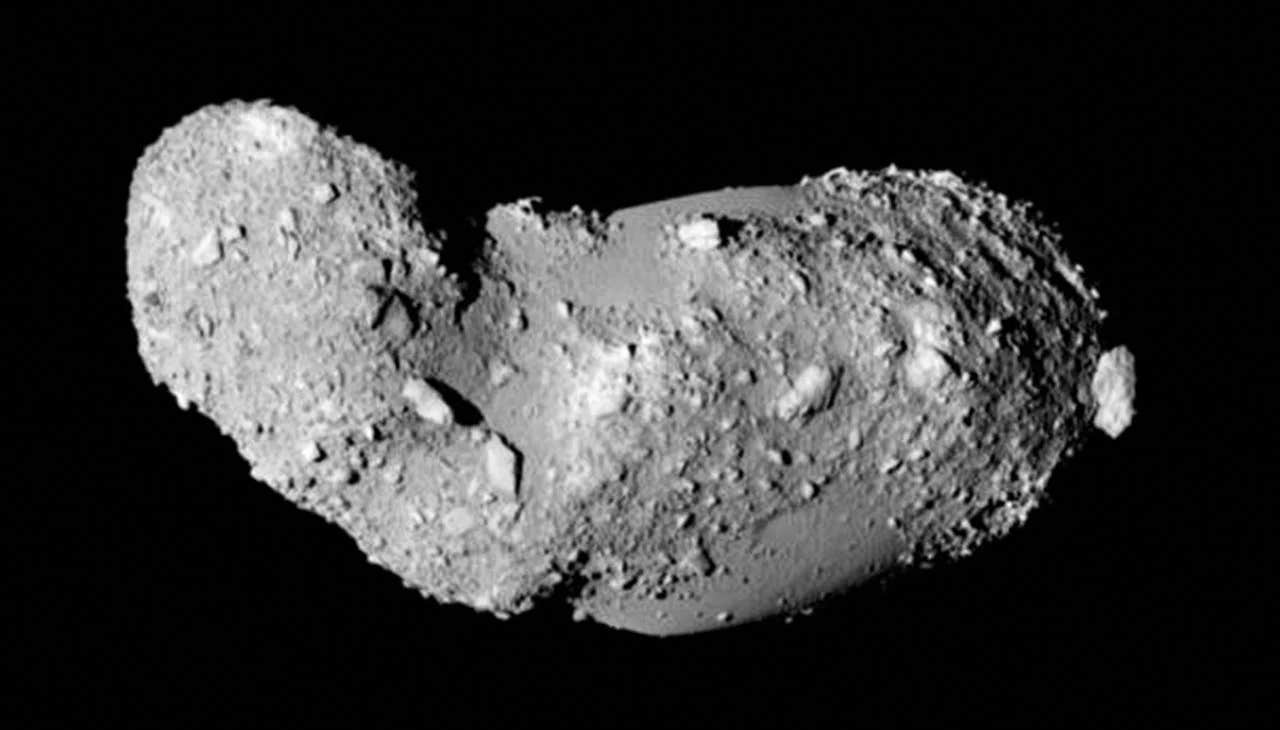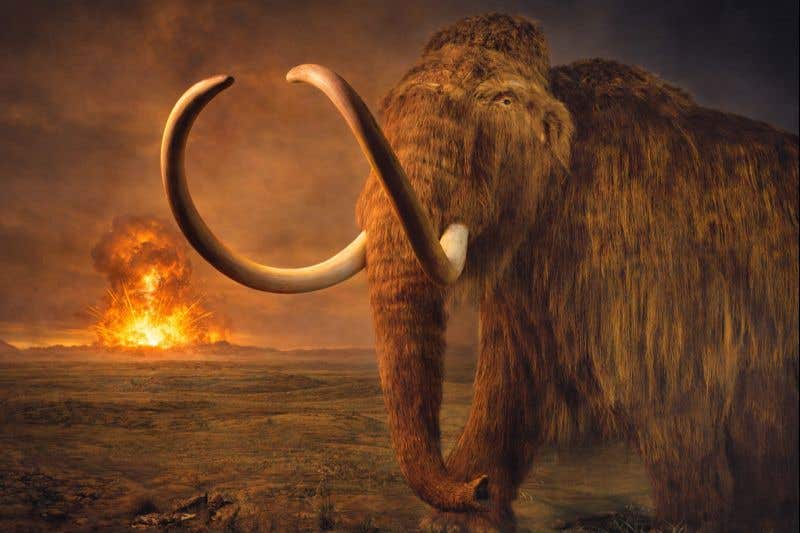Historical first: Scientists discover the ingredients of life on asteroid
Unlocking the origins of life starts with understanding how simple space molecules turned into complex building blocks.

This very detailed view shows the strange peanut-shaped asteroid Itokawa. (CREDIT: JAXA)
Unlocking the origins of life starts with understanding how simple space molecules turned into complex building blocks. To do that, scientists need untouched samples—material that hasn’t been altered by Earth’s air, water, or microbes. The most revealing clues come from rocks gathered directly from asteroids.
Meteorites, though valuable, often get contaminated once they land on Earth. Moisture, oxygen, and even human handling change their chemical makeup. In contrast, samples collected in space preserve their true nature—chemical, organic, and structural. These offer a snapshot of ancient reactions that shaped the early solar system.
One mission that pushed this frontier is Japan’s Hayabusa, led by the Japan Aerospace Exploration Agency (JAXA). It returned to Earth with over a thousand dust-sized grains from the surface of asteroid Itokawa. Each tiny particle holds information untouched for billions of years.
Itokawa isn’t your average rock. As an S-type asteroid, it's made of loose rubble from a larger body that once underwent intense heating. This gives scientists a rare look at what the early inner solar system might have been like—hot, chaotic, and full of violent collisions.
The Quantum Whisper of 'Amazon'
While many meteorites that reach Earth also come from S-type asteroids, they’re usually poor in organics. That makes it hard to study how carbon-based molecules traveled through space. Hayabusa’s samples sidestep this problem. They’ve been kept pure from Earthly contamination, allowing researchers to detect delicate compounds that would otherwise vanish.
One of these particles, nicknamed “Amazon,” has captured special interest. Though only 30 micrometers across—smaller than a grain of sand—it contains both organic material and water. Its shape, oddly similar to the South American continent, earned it its name and highlights its one-of-a-kind status.
Amazon is packed with minerals like olivine, pyroxenes, and albite, along with traces of high-temperature carbonates. These findings tie it back to the same family of rocks as many meteorites—ordinary chondrites. Its makeup helps confirm its link to S-type asteroids and brings scientists a step closer to tracing life’s earliest ingredients.
Related Stories
Through advanced spectroscopy techniques, researchers identified a diverse array of organic materials within Amazon, including complex carbonaceous compounds. These findings hint at an intricate history involving intense heating, dehydration, and subsequent rehydration.
Despite being subjected to temperatures exceeding 600°C, Amazon’s organic materials reveal that primitive compounds likely arrived on Itokawa’s surface after it cooled.
This evidence suggests that asteroids like Itokawa have experienced dynamic chemical evolution, incorporating water and organic matter from external sources over time. Such processes mirror the early chemical transformations on Earth, linking asteroid chemistry to the potential origins of life.
Unlocking Organic Secrets
The discovery of organic compounds on Itokawa marks a monumental step in understanding life’s beginnings. Previous studies focused on carbon-rich C-class asteroids, but Itokawa’s S-type classification broadens the scope of astrobiological research. Researchers found polyaromatic molecules and graphite structures, providing clear evidence of extraterrestrial origin.
The isotopic composition of these organic materials overlaps with both terrestrial and extraterrestrial sources. This overlap complicates the task of pinpointing their origins but also highlights the complexity of organic chemistry in space.
Importantly, the study demonstrated that organic matter on Itokawa has continuously evolved, even under extreme conditions. This evolutionary process, akin to the chemical pathways leading to life on Earth, reinforces the idea that early biochemistry could have extraterrestrial roots.
Royal Holloway University of London scientist Queenie Chan expressed her excitement, stating, “These findings reveal complex details of an asteroid’s history and how its evolution pathway is so similar to that of the prebiotic Earth.”
Implications for Life’s Origins
Asteroids like Itokawa may hold the keys to unraveling the origins of life. Billions of years ago, collisions with space rocks and icy bodies likely delivered vital molecules, such as cyanide, ribose, and amino acids, to Earth’s surface. These compounds, combined with water, set the stage for the emergence of life.
The Hayabusa mission’s success underscores the importance of collecting pristine asteroid samples. JAXA’s meticulous handling of over 900 particles in an ISO 6 cleanroom ensures their purity.
Early studies revealed carbon-based molecules in these samples, providing further evidence that S-type asteroids harbor organic chemistry. Unlike meteorites, which are exposed to Earth’s environment, these samples preserve their original states, offering unparalleled insights into the early solar system’s chemistry.
The Itokawa findings align with evolutionary models tracing life’s origins to over 3.5 billion years ago. During this era, simple organic molecules began forming RNA, proteins, and fatty acids. The precise mechanisms remain elusive, but ongoing research suggests that asteroids played a pivotal role in delivering the necessary ingredients.
The Hayabusa2 mission, which returned samples from the carbon-rich asteroid Ryugu, provides an opportunity to compare organic chemistry across different asteroid types. Together, these missions offer a more comprehensive view of how organic compounds evolve in space. By analyzing these materials, scientists hope to uncover patterns that link asteroid chemistry to the origins of life on Earth.
The journey to understand life’s beginnings is far from over, but each discovery brings us closer to connecting the dots. From the organic compounds on Itokawa to the broader implications for astrobiology, these findings expand our understanding of the universe’s potential to foster life.
As research continues, the narrative of life’s origins will undoubtedly extend beyond Earth, weaving a story that spans the cosmos.
Note: Materials provided above by The Brighter Side of News. Content may be edited for style and length.
Like these kind of feel good stories? Get The Brighter Side of News' newsletter.



